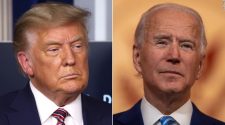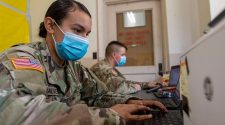It’s beginning to look like industrial policy, the political program that dares not speak its name, will be on the next administration’s healthcare agenda no matter who wins the November election.
Both President Donald Trump and former Vice President Joe Biden are calling for beefed-up domestic manufacturing of personal protective equipment, generic drugs and vaccines. Both candidates lament the U.S.’ near total reliance on China for these critical medical goods.
In recent weeks, leading voices in healthcare have endorsed the re-creation of a domestic manufacturing base capable of providing goods in short supply. “It is dangerous to continue an over-reliance on China or any other country for the manufacture of essential supplies and equipment,” Northwell Health CEO Michael Dowling wrote in his just-released book Leading Through a Pandemic.
“For critical medical products—such as face masks, respirators, isolation gowns, commonly used medications, gloves and face shields—demand necessitates at least three global suppliers in the market from multiple regions, with at least one of based in the U.S. to protect against border closures,” declared Susan DeVore, CEO of Premier, one of the nation’s leading group purchasing organizations, in Health Affairs.
For most of the past four decades, advocating for industrial policy has been anathema to most politicians and mainstream economists. The Washington establishment firmly rejects the idea, which it dubbed “picking winners and losers.”
The concept has always been far more nuanced than that simplistic formulation. Originally floated in the 1980s as a response to erosion of manufacturing, proposed industrial policies have included restricting imports from countries that failed to enforce labor and environmental standards; creating a manufacturing extension service to help struggling firms adapt cutting-edge technologies; offering job training programs for displaced blue-collar workers; and guaranteeing purchasing contracts for U.S.-located makers of critical goods.
Instead of embracing those tactics, every administration, until the current one, pursued international trade agreements that called for lower tariffs and elimination of the hidden trade barriers that were inhibiting U.S. firms and farmers from selling more abroad. The result was ever higher trade deficits.
National security procurement was the sole exception. A 1941 law required the Defense Department to purchase textiles, clothing, food and hand tools from domestic manufacturers. In 2009, that was extended to Department of Homeland Security agencies.
The 1950 Defense Production Act gave the federal government the right to order domestic manufacturers to make goods needed for the Korean War effort and other national emergencies. Trump invoked the DPA this year to produce ventilators and a rapid antigen test.
However, the DPA is an unwieldy tool for rebuilding the healthcare supply base. Unlike the Defense Department, which has centralized purchasing, the healthcare system supply chain has thousands of providers and is serviced by dozens of major supply and distribution firms.
Over many decades, the entire ecosystem, under pressure to reduce costs, has been motivated to seek the lowest-cost supplies. Under the reigning free-trade regime, outsourcing production to China became the preferred option.
Restructuring the system will take years. It begins with a commitment by Congress and the White House to finance public health the same way it finances national defense—long-term and with adequate resources.
It also requires a commitment by every player in the healthcare supply chain to accept curbs on their short-term interests for the good of the nation. I’m betting a government leader willing to bring all the leading players together will find that they are up to the task.

















